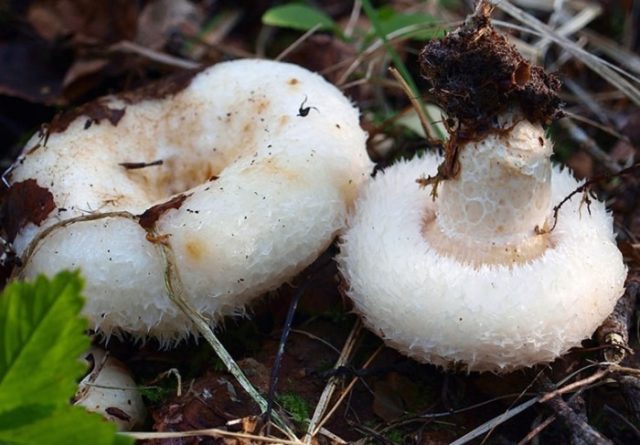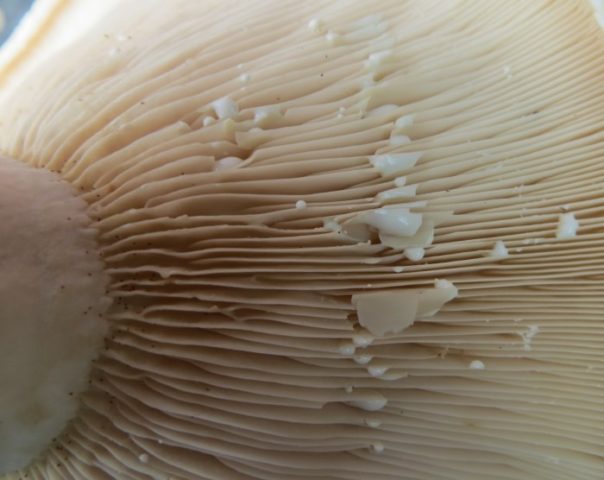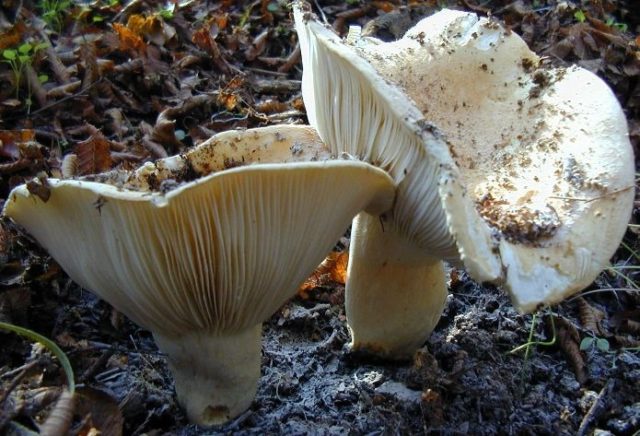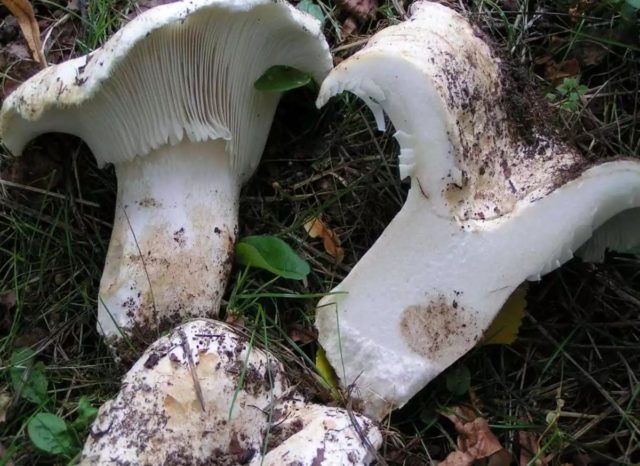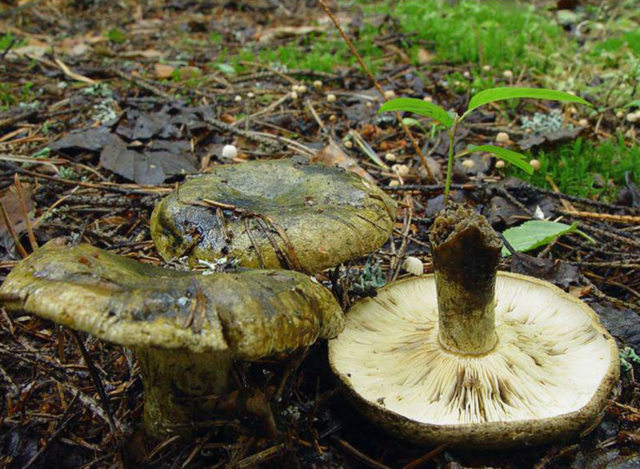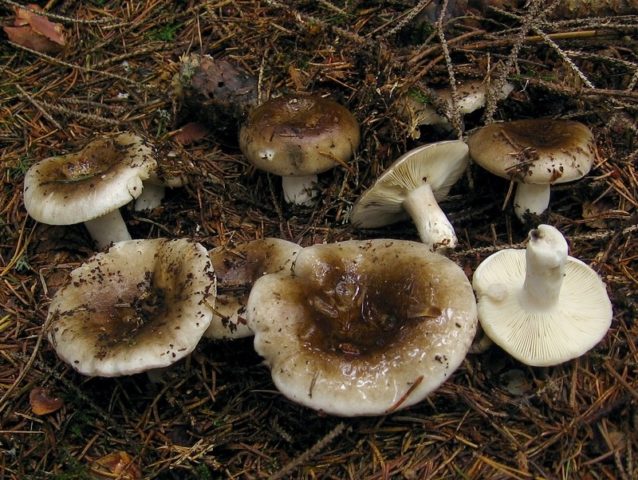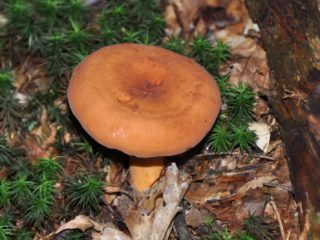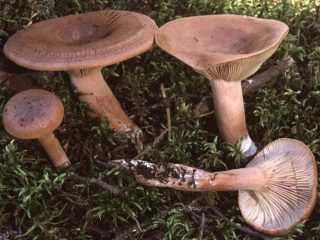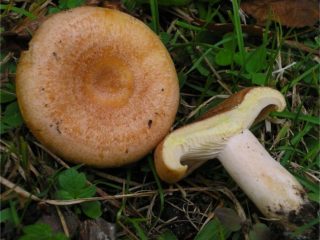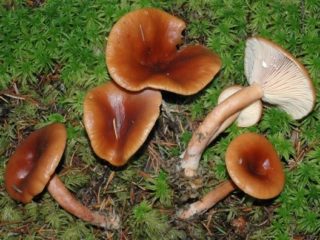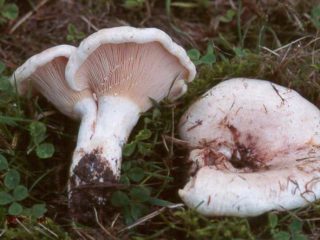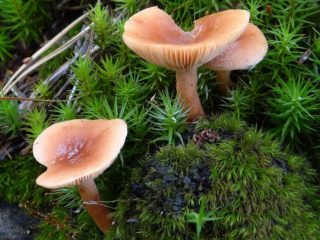Content
Breasts and podgrudki differ from each other not very clearly. Both mushrooms are large, have almost the same color and similar shape. Both are edible, but there are differences in how they are prepared, so it's helpful to know how to tell one variety from the other.
How to distinguish a milk mushroom from a podgruzdka
To accurately distinguish a mushroom from a mushroom by appearance, it is enough to know a few basic characteristics of these representatives of the mushroom kingdom. Differences exist in all parts of the mushroom.
What does a breast and a breast look like: differences in appearance
The true (white) breast milk belongs to the genus of milkweeds. This is a large, albeit low-growing mushroom, the cap of which can grow up to 20 cm in diameter. At first it is convex, very light, over time it takes on the shape of a funnel, its edge with slight pubescence turns inward, and brownish spots may appear on the surface. The skin is wet and slimy.
The plates are wide, often spaced, cream-colored with a yellowish tint. With age, they acquire a more pronounced yellowness.
The leg does not exceed 7 cm in height, it is smooth, cylindrical in shape, and in adult specimens it is hollow at the cut.
The pulp is dense, brittle, with a specific odor similar to the aroma of fruit. When damaged, milky juice is released abundantly, darkening in the air.
The white breast is very similar in appearance to a real breast. Although these representatives of the kingdom belong to the Russula family, the first is a laticifer, and the second belongs to the Russula genus.
Its cap can reach 25-30 cm in diameter, although most often this figure is 15-20 cm. The surface is flat-convex, with a small depression in the center. The peel has a rough texture reminiscent of felt. The edge is smooth, without fringe. The younger the individual, the lighter the cap. Over time, a yellowish-brown coating may appear on its surface, and in older specimens the color changes to brown. The leg is strong, light, somewhat tapering upward.
The plates are narrow, most often light cream, but in some cases they can be bluish-green or turquoise.
Despite the great external similarity of these varieties, there are noticeable differences between them:
- the real milk mushroom has a wet mucous cap, while the cap of the milk mushroom is always dry;
- the edges of the cap of the milk mushroom have a fibrous fringe, which the milk mushroom does not have;
- the milk mushroom has wider plates than its counterpart;
- old laticifers become yellowish-brown, and the pods turn brown;
- the cut of the first exudes milky juice, while the pulp of the second is always dry.
What is the difference between milk mushrooms and loads from the photo?
White milk mushrooms and milk mushrooms look the same only at first glance - if you know their signs and differences, you can even identify them from a photo.
Characteristic features of milk mushrooms are the white color of the cap, pubescence at the edges and a moist mucous surface.
The white milk mushroom differs from the milk mushroom by the secretion of milky juice. This is the main feature that allows it to be identified.
The loading cap is dry, with a smooth edge. Beneath it are narrow plates.
The stem narrows upward, and no milky juice is released on the cut.
Differences in the method of preparing white milk mushrooms and milk mushrooms
Due to its bitter pulp, milk mushrooms are classified as conditionally edible mushrooms. It is the best in this category; it is not for nothing that in Rus' only it was considered suitable for pickling. And now these mushrooms are salted. To get rid of bitterness, they are soaked for 24 hours, changing the water from time to time. Then they are thoroughly washed and again left in water for a day. These milk jugs are salted with spices.
Pickles can be used as an independent snack or as a component for preparing other dishes - salads, pie fillings, etc.
Less popular is the use of these mushrooms for cooking soup, stewing, frying and pickling.
Podgruzki are also edible; unlike milkweeds, they are less valuable. They do not have a pronounced taste, which is why they are classified as edibility category 4. They can also be salted, but do not need to be soaked first. Before salting, they are thoroughly washed and boiled.
Some fans stew, fry or marinate the dumplings, and also freeze them for future use. In all these cases, they must first be boiled, lightly salted, and then washed in cold running water so that they do not darken.It must be remembered that the taste qualities of these representatives of the mushroom kingdom do not have much nutritional value, so it is better to use them as part of mixtures with more noble mushrooms.
Black podgrudok and black breast: difference in photo and description
Black podgrudok and black breast are two more varieties, the differences between which are useful to know.
Black milk mushroom can be distinguished by its special olive-black cap. In young individuals, its surface is mucous and shiny, but in adults it becomes dry and rough. The plates are dirty creamy. Like other laticifers, when the body of the mushroom is damaged, milky juice is released, and the freshly cut white pulp quickly darkens in the air.
The black cap has a brown cap that gets darker with age. The surface is somewhat sticky and shiny. The plates are narrow, of different lengths. When damaged, the pulp turns grayish-pink, then acquires a gray tint. There is no milky juice.
Conclusion
Milk breasts and podgrudki differ not only in external characteristics. Although both of them are very popular among lovers of “silent hunting,” the first, unlike the second, is valued higher. Despite the external similarity, it is not difficult to distinguish them from each other by their characteristic features.
